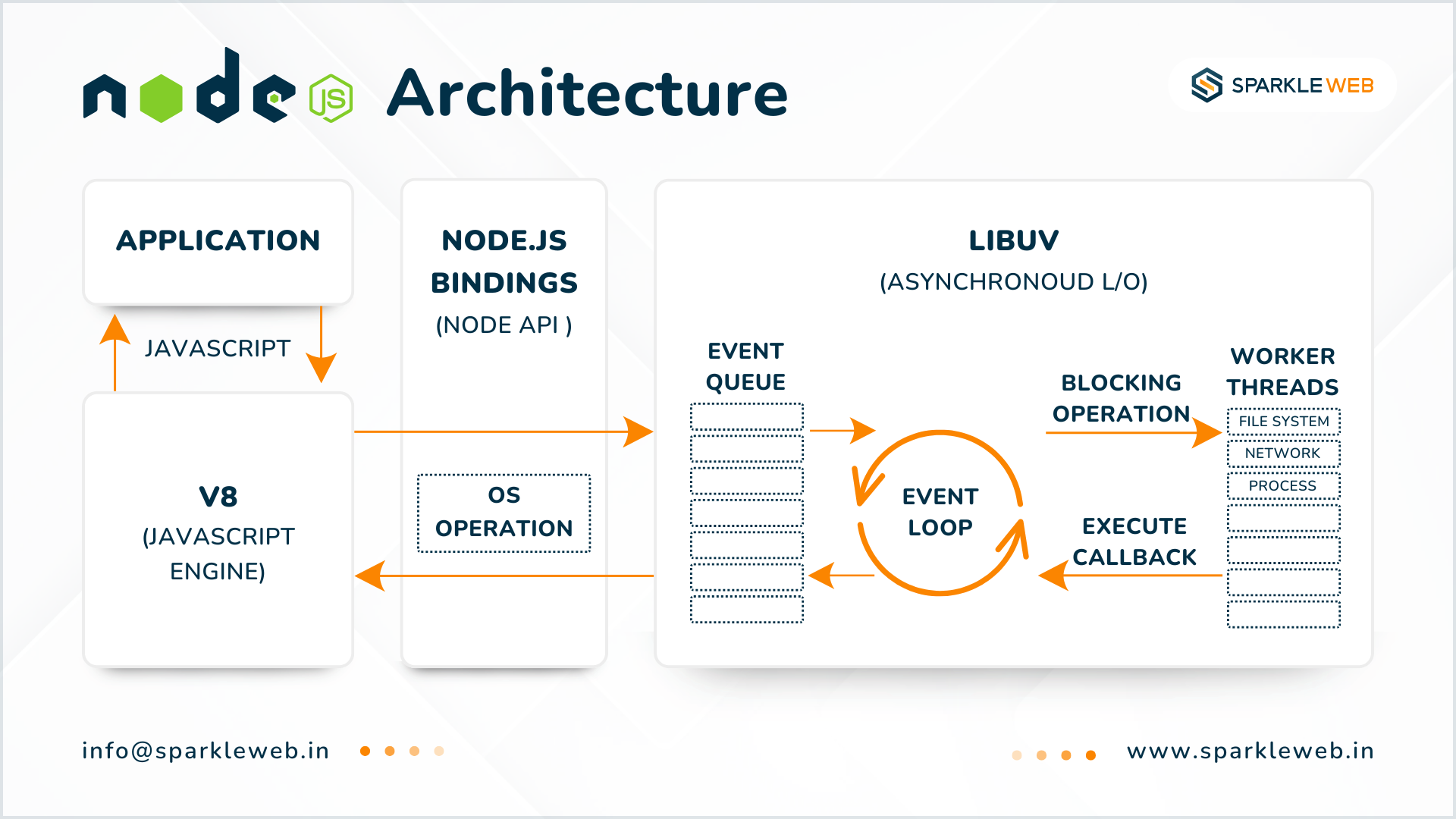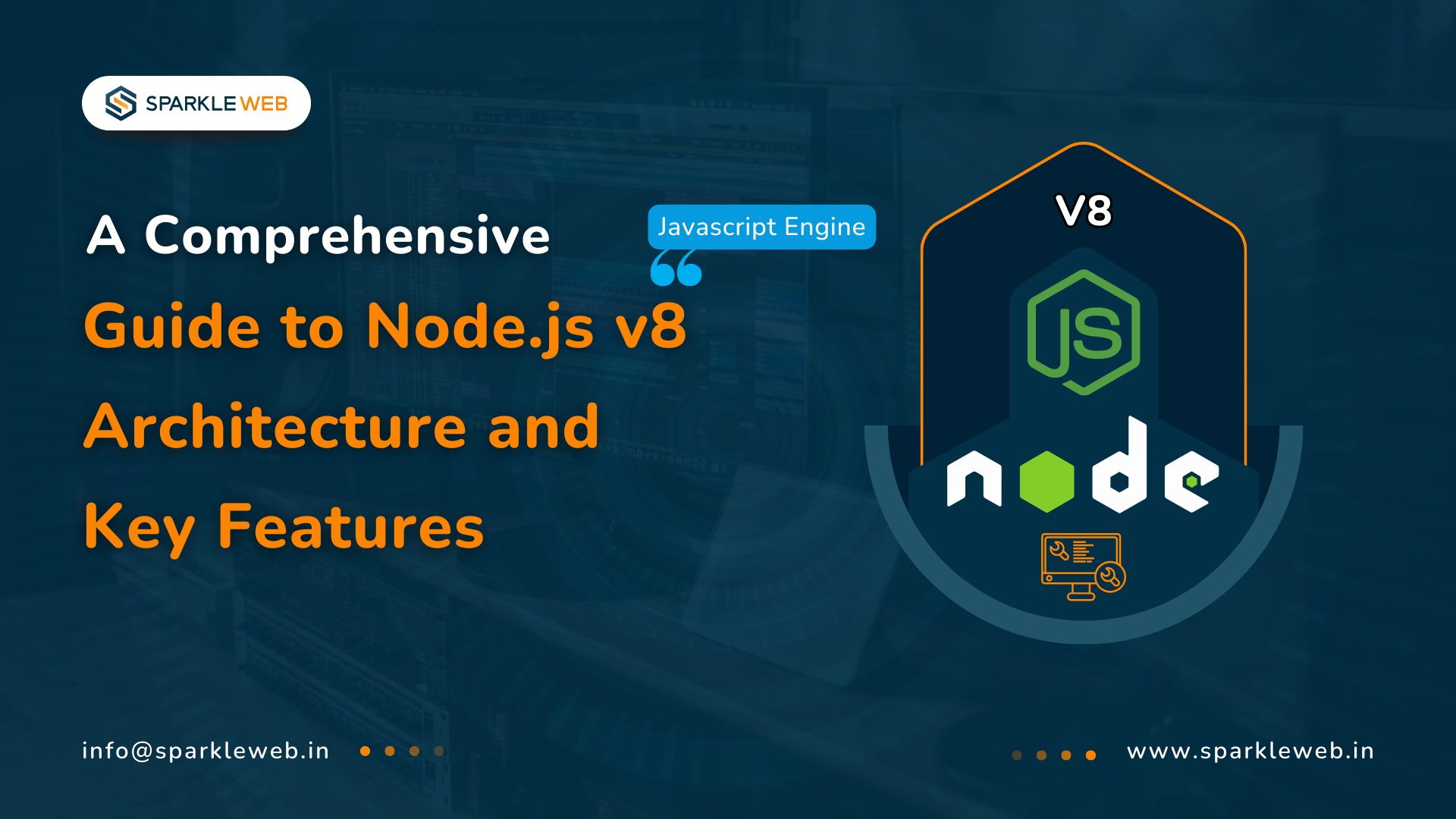Building a great web application requires a solid foundation. One of the most popular tools developers use for this is Node.js. With its version 8 (Node.js v8), the platform became even better, bringing new features and improvements that make creating scalable and efficient applications easier. In this guide, we will explore Node.js v8’s architecture and key features in a simple and detailed way.
What is Node.js?
Node.js is an open-source platform designed to help developers create network applications that can handle many tasks at once. It’s especially good for apps that need to process lots of data quickly, like chat apps, real-time updates, or streaming services.
Node.js is built on Google’s V8 JavaScript engine, the same engine that powers the Chrome browser. This engine turns JavaScript code into machine code, which computers can understand and execute quickly.
Key Characteristics of Node.js
Here are some important qualities of Node.js:
1. Non-blocking, asynchronous I/O
2. Single-threaded event loop
3. Cross-platform
- Node.js can run on multiple operating systems like Windows, macOS, and Linux, making it flexible for developers and businesses.
Architecture of Node.js v8: The Core Components
1. V8 JavaScript Engine
The V8 engine is the heart of Node.js. Developed by Google, it’s responsible for turning JavaScript into machine code, allowing it to run super-fast.
Here’s how the V8 engine works:
-
Parsing: It converts your JavaScript code into an Abstract Syntax Tree (AST), a structure that shows the code’s meaning.
-
Compilation: The AST is compiled into machine code, which your computer can understand.
- Execution: The machine code is executed, and the results are sent back to the app.
V8 in Node.js v8 supports modern JavaScript features like async/await, making code cleaner and easier to write.
2. Libuv Library
Libuv is another key part of Node.js. It’s a library written in C that handles asynchronous (non-blocking) operations.
Two main features of Libuv are:
-
Event Loop: This is like a manager that organizes tasks and makes sure everything runs smoothly.
-
Thread Pool: Some tasks, like reading files, can’t be done asynchronously. The thread pool helps handle these tasks behind the scenes.
3. Event Loop
The event loop is what makes Node.js special. It’s a system that processes tasks and events. Even though Node.js uses a single thread, the event loop allows it to manage many tasks efficiently.
The event loop has different phases, each handling a specific type of task:
- Timers Phase: Handles tasks scheduled with setTimeout() or setInterval().
- I/O Callbacks Phase: Processes tasks like reading files or making network requests.
- Idle, Prepare Phase: Used internally by Node.js for special tasks.
- Poll Phase: Checks for new I/O tasks and processes them.
- Check Phase: Executes tasks scheduled with setImmediate().
- Close Callbacks Phase: Manages tasks like closing a network connection.
4. Node.js APIs
Node.js has built-in APIs that let developers interact with the operating system and perform tasks like reading files or handling HTTP requests.
Some key APIs are:
-
File System (fs): Lets you read, write, and manage files.
-
HTTP Module: Helps create servers and handle requests and responses.
- Buffer API: Manages binary data, such as files or network data.
5. Node.js Runtime
The runtime is the environment where Node.js applications run. It includes:
In Node.js v8, the runtime got better with:
Key Features Introduced in Node.js v8
1. V8 Engine Upgrades
Node.js v8 improved the V8 engine, which made applications faster and better at managing memory. These upgrades help handle tasks that involve heavy computations or large amounts of data.
2. Async/Await Support
This feature made working with asynchronous (non-blocking) tasks easier. Instead of writing code with lots of callbacks (functions inside functions), you can use async and await to write cleaner and more readable code.
Example
async function fetchData() {
const result = await fetch('https://api.example.com/data');
console.log(result);
}
3. Improved Buffer API
The Buffer API in Node.js v8 introduced safer and easier-to-use methods like:
-
Buffer.from()
-
Buffer.alloc()
These replaced older methods, making the code more reliable.
4. Node.js Inspector
Debugging got easier with the Node.js inspector, which allows developers to test and fix their applications directly from the command line.
5. Enhanced Diagnostics
Developers can now use tools like heap snapshots (to check memory usage) and CPU profiling (to find performance issues).
6. Long-Term Support (LTS)
Node.js v8 became a Long-Term Support (LTS) version, meaning it received updates and security fixes for a longer time, ensuring stability for developers using it in production.
Conclusion: Why Choose Node.js v8 with us?
Node.js v8 brought major advancements that made applications faster, safer, and easier to debug. With features like async/await, improved performance, and better diagnostic tools, it’s an excellent choice for building high-performance applications.
At
Sparkle Web, we specialize in creating scalable and efficient applications using Node.js. Whether you’re building a web app, API, or real-time service, our expertise ensures your project is a success.
Let’s Build Something Amazing Together!
Contact us today to turn your ideas into reality.




Vaishali Gaudani
Skilled React.js Developer with 3+ years of experience in creating dynamic, scalable, and user-friendly web applications. Dedicated to delivering high-quality solutions through innovative thinking and technical expertise.
Reply